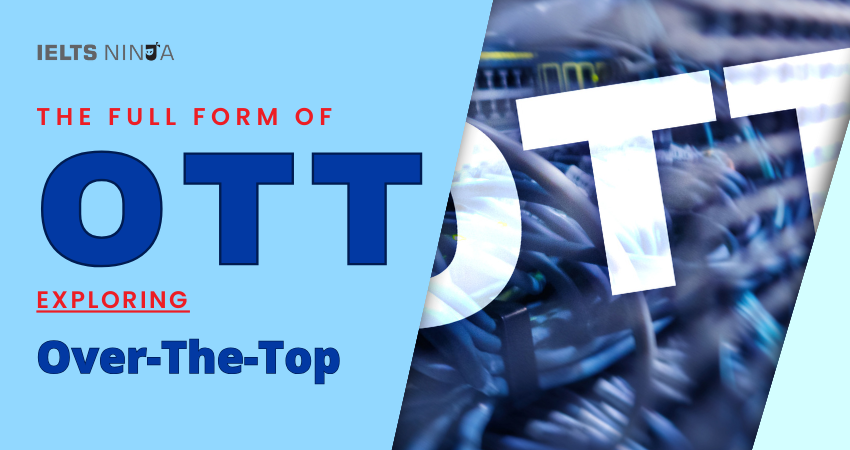The full form of OTT के लिए खड़ा है “Over-The-Top”, and it refers to the delivery of media content, such as movies, TV shows, music, and other video or audio content, over the internet directly to users. OTT services have gained immense popularity in recent years and have disrupted traditional forms of media distribution.
Key Details about OTT (Over-The-Top):
Here are key details about OTT:
Content Delivery:
- OTT platforms deliver content to users via the internet, bypassing traditional cable or satellite television distribution methods.
- Users can access OTT content on a variety of devices, including smartphones, tablets, smart TVs, computers, and dedicated streaming devices like Roku, Amazon Fire TV, and Apple TV.
Variety of Content:
- OTT platforms offer a wide range of content, including movies, TV series, documentaries, live sports, news, music, and more.
- Many OTT services produce their original content, known as “original programming,” which has garnered critical acclaim and a loyal fan base.
On-Demand Viewing:
- One of the primary advantages of OTT is on-demand viewing, allowing users to watch content whenever they want, as opposed to scheduled programming on traditional TV.
- Users can pause, rewind, fast forward, and even download content for offline viewing.
Ad-Supported Models:
- Some OTT platforms offer free access to content by generating revenue through advertising. Users watch ads during content playback.
- YouTube is a prominent example of an ad-supported OTT platform.
Cord-Cutting:
- The rise of OTT has led to a phenomenon known as “cord-cutting,” where users cancel traditional cable or satellite TV subscriptions in favor of OTT services.
- Cord-cutting offers cost savings and greater flexibility in content selection.
OTTs Subscription Models:
- Many OTT platforms operate on a subscription-based model, where users pay a monthly fee to access a library of content.
- Popular subscription-based OTT services include Netflix, Amazon Prime Video, Disney+, HBO Max, and Apple TV+.
यह भी पढ़ें: सर्वश्रेष्ठ ऑनलाइन आईईएलटीएस कोचिंग एवं प्रशिक्षण अकादमी
Global Reach of OTT:
- OTT platforms have a global reach, allowing users worldwide to access content, which has led to the globalization of media and entertainment.
- Content can be localized with subtitles and dubbing to cater to a diverse audience.
Competition in OTT:
- The OTT industry is highly competitive, with numerous players vying for subscribers and producing high-quality content.
- Competition has led to innovations in content delivery, user experience, and pricing.
Challenges in OTT:
While OTT offers many benefits, challenges include issues related to content piracy, subscription fatigue (due to the proliferation of services), and the need for high-speed internet connectivity.
OTTs Impact on Entertainment:
- OTT has disrupted the traditional entertainment industry, prompting studios and networks to adapt to changing viewer habits.
- It has also given opportunities to independent filmmakers and content creators to reach a global audience.
निष्कर्ष:
OTT (Over-The-Top) services have revolutionized the way media content is delivered and consumed. With a vast array of content, flexible viewing options, and global accessibility, OTT has become a dominant force in the entertainment industry. The competition among OTT platforms continues to drive innovation and shape the future of media consumption.








